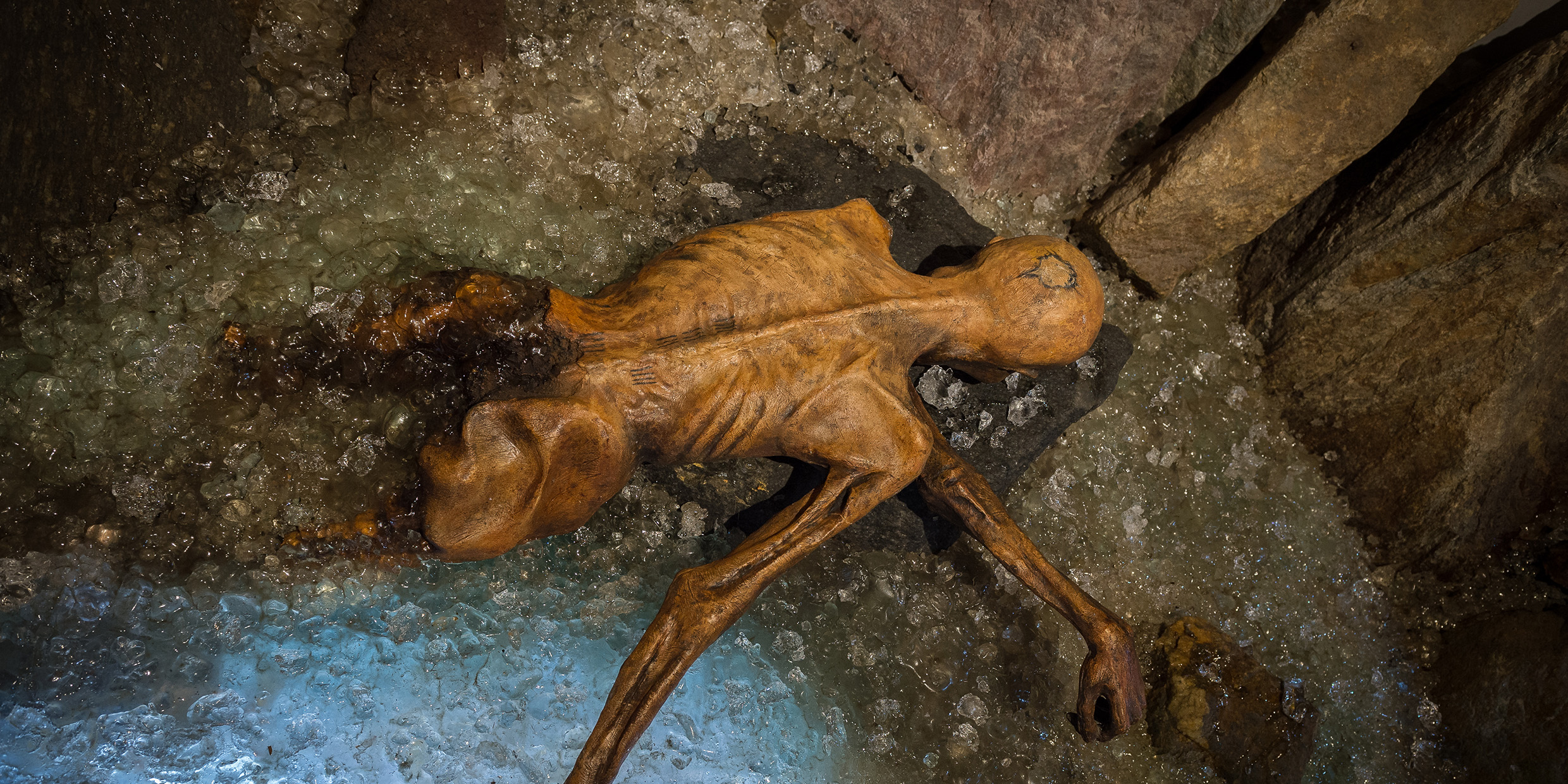Originally published 21 October 1991
Mystery surrounds the well-preserved 4,000-year-old body of a man found recently in an Alpine glacier. Who was he? Why had he climbed so high above the valley floor? How did he die?
He was armed with axe, knife, bow, and quiver of arrows. He carried a flint and tinder in a leather pouch. He wore some nifty leather duds and a wooden backpack. All he lacked was a Swiss Army knife.
Archaeologists guess that the Iceman (as he was dubbed) came from the upper classes of his society. He was indeed handsomely fitted out, suggesting a certain status in his community. The man’s body was clean-shaven, including eyebrows and pubic hair, and he bore tattoos on his back and feet. These too were signs of high rank in ancient cultures, say archaeologists.
This is all inference, of course, inspired less by incontrovertible evidence than by the desire to find a prince rather than a pauper. Who wants John Doe on ice when you can have a Bronze Age celebrity instead?
There are alternative interpretations of the evidence. Perhaps the Iceman was a thief, making his getaway across the mountain with a load of stolen goods. The point is, no one really knows, and the Iceman isn’t talking.
The Iceman’s DNA
However, there may be some things we can know for sure about the Iceman. Genetic researchers will be quick to stick their needles into his skin, collecting specimens of DNA for analysis. A new technique called PCR (polymerase chain reaction) will enable them to clone the Iceman’s DNA over and over again until they have a substantial quantity of accessible, identifiable material. Then they can read the genetic code and piece together the Iceman’s place in the drama of life.
A single hair stubble from a pore in the Iceman’s clean-shaven chin, for example, could provide enough DNA, when amplified by PCR, to determine the unlucky Bronze Age climber’s kinship to present-day Europeans.
The PCR method for cloning genes was discovered in 1985 by a California scientist named Kary Mullis. With the new technology, DNA can be made to reproduce itself over and over, multiplying a millionfold. During the past few years especially, researchers have become amazingly adept at cloning and identifying tiny snippets of DNA.
The new technology has obvious application to genetic engineering, medicine, and forensics (absolutely identifying the perpetrator of a crime from the evidence of a microscopic flake if skin, for example). It also provides archaeologists, anthropologists, and evolutionists with a powerful tool for reconstructing the past.
What astonishes all researchers is the length of time ancient DNA can remain intact and clonable.
Long sections of human DNA have been cloned from a 2,400-year-old Egyptian mummy, and from the brain cells of humans buried 8,000 years ago in a Florida bog.
Scientists are using DNA from ancient burials to determine kinships among the pre-Columbian peoples of the Americas, and to discover the mysterious origin of Britain’s Anglo-Saxons.
Woolly mammoths became extinct 10,000 years ago, but enough DNA has been recovered and cloned from a mammoth found frozen in Siberia to show that it is related with equal affinity to present-day African and Indian elephants.
So far, the ancient DNA sweepstakes is led by Edward Golenberg, a geneticist at Wayne State University, who extracted DNA from 18-million-year-old fossil magnolia leaves that came from the bed of an ancient lake in Idaho. The DNA was cloned into analyzable quantities and compared gene by gene with modern trees. Golenberg is now looking at 100-million-year-old plant fossils from the age of dinosaurs.
Building plans for life
What we have here is the genetic reconstruction of the past, figuring out life’s family tree not by the traditional methods of evolutionists — based on anatomical similarities among living species and the study of fossils — but by using the very blueprints of life itself. It’s as if among the ruined cities of past civilizations archaeologists found complete sets of building plans, still fresh and intact.
Applications of PCR technology will multiply dramatically in the next few years. In the long haul, it could turn out to be the most important new technology of the 20th century, edging out such developments as nuclear energy and the transistor.
Meanwhile, the Iceman may yield some of his secrets, not by the spiffy gear he carried into the Alpine pass (which may, after all, have been purloined), nor by his tattoos or peculiar shaving habits (which may have been common to every John Doe in the tribe). In every cell of his body he carries a complete and unambiguous calling card, identifying his unique place in the ever-unfolding pageant of life.
PCR technology can amplify genetic whispers from the past into a full-voiced chorus of history. As more of the Iceman’s near contemporaries are thawed from ice, recovered from bogs, or scratched out of the ground bone by bone, we are sure to know more about where he came from — and where we all are going.
Ötzi the Iceman’s complete genome was sequenced by 2012, yielding a wealth of genetic information. In 2013, DNA analysis has discovered 19 living Austrians who are genetically related to the 5,000-year-old Iceman. ‑Ed.



